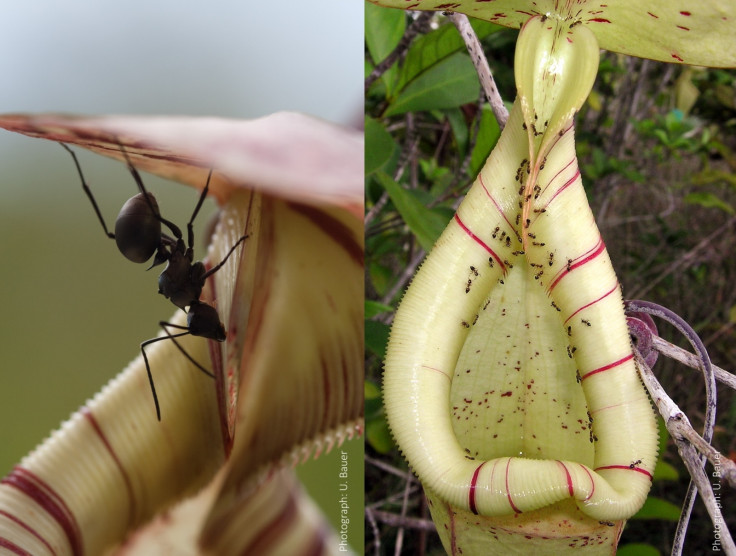Borneo: Clever pitcher plants turn off traps to catch more ants

Intelligent pitcher plants trick their insect prey by turning off their traps in order to lull them into a false sense of security. The result – more ants for dinner.
Researchers at the University of Bristol's School of Biological Sciences were studying tropical pitcher plants in Borneo to examine how they use slippery traps to catch insects.
Their findings showed that wild plants use traps sporadically in order to capture large batches of ants.
Study author Ulrike Bauer said: "The plant's key trapping surface is extremely slippery when wet but not when dry. For up to eight hours during dry days, these traps are 'switched off' and do not capture any of their insect visitors. At first sight, this is puzzling because natural selection should favour traps that catch as many insects as possible."
To find out what was going on, the team kept the trapping surfaces wet artificially. They found these plants were no longer able to catch big batches of ants.
Explaining, Bauer said: "Ants are social insects. Individual 'scout' ants search the surroundings of the nest for profitable food sources. When they find a pitcher trap full of sweet nectar, they go back to the colony and recruit many more ant workers.
"However, a trap that is super-slippery all the time will capture most of these scout ants and cut off its own prey supply.
Published in the Proceedings of the Royal Society B, the team said they found that when plants turned off their traps, they were ensuring scout ants returned safely to the colony and would return with more workers.
"Later, when the pitcher becomes wet, these followers get caught in one sweep. What looks like a disadvantage at first sight, turns out to be a clever strategy to exploit the recruitment behaviour of social insects."
© Copyright IBTimes 2025. All rights reserved.






















